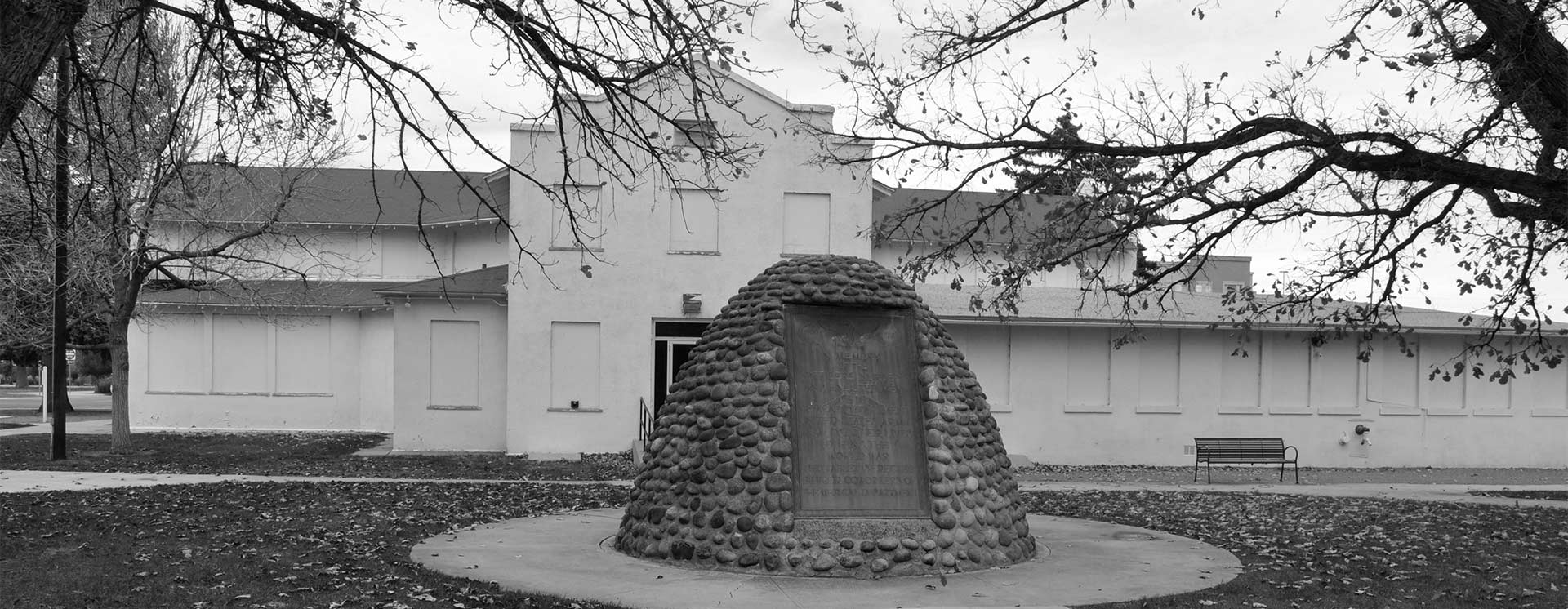
World War One Sites - The NETWORLD Database
World War I Memorial – Pécs-Somogy
The memorial is made of white marble and bronze. It is a pyramid shaped obelisk, with a turul bird (mythical falcon, a national symbol) perched at the top. There is also a bronze relief portraying a dying soldier surrounded by two angels under the national crest. In the background there is a battle scene. The relief was made by the sculptor Miltiadesz Manno in 1923.
The inscriptions are:
“A világháborúban hősi halált haltak emlékére emeltette Somogy község 1923.” [Commemorated for the memory of those who died heroic deaths in the world war, village of Somogy 1923.]
“Hősi halált haltak” [Died heroic deaths] : 34 names inscribed
“Harctéren szerzett betegség következtében itthon elhaltak” [Died here at home from illnesses brought home from the front] : 6 names inscribed
“Az nem lehet, hogy annyi szív // Hiába onta vért // S keservben annyi hű kebel // Szakadt meg a honért” [It cannot be, that so many hearts // Uselessly spilled their blood // And in vain, so many faithful hearts //Were broken for the homeland]
(poem excerpt by Mihály Vörösmarty: Szózat [Summons].)
Hungary, Hungary
Type of WWI-heritage
- War monument
Dimensions
~5m
State of repair/preservation
Renovated in 1989
Historical WWI Context
1. WWI heritage related historical context
This local monument was the first one commemorated in the Pécs area (1923).
40 names in total are inscribed on the monument:
“Hősi halált haltak” [Died heroic deaths] : 34 names inscribed
“Harctéren szerzett betegség következtében itthon elhaltak” [Died at home from illnesses secured at the front] : 6 names inscribed
2.Broader national WWI-context (e.g. including lists of fallen soldiers or a link to such lists)
Already in the first year of the war, the Hungarian National Association of Applied Arts and the National Commission for the Commemoration of Heroic Memorials (HEMOB) announced a call for war memorials. In 1917 Article VIII. mandated all villages and towns to inaugurate artistic statues and memorial plaques. Template albums were issued, and the objective was for the memorials to not concentrate on mourning the dead, but instead inspire and stir heroic momentum.
Historical Images
State of legal protection
protected (Ruled by the Act LXIV of 2001: https://net.jogtar.hu/jr/gen/hjegy_doc.cgi?docid=a0100064.tv)
Owner
Public poperty.
Kind of cultural use of WWI
No information available.
Opening
The Baka Museum in Szekszárd is open Saturdays 9.00-13.00
Other visiting opportunities may be arranged for groups or non-locals by contacting György Borbandi (tel.: +36302260868, e-mail: bbander@freemail.hu) or Zoltán Tálosi (tel.: +36304571022, e-mail: repulos@hotmail.com)
For more information about “Új világ született” exhibition visit:
http://ujvilagszuletett1.elsovilaghaboru.com/en/visitor-information
The Museum of Military History is opened from Tuesday till Sunday, form 9.00 – 17.00.
(tel: +36 1 325-1600; e-mail: webmaster@mail.militaria.hu )
Entrance Fee
Entry to the Baka Museum in Szekszárd is free of charge, the entry to “Új világ született” exhibition is 3000 HUF, while the entry to the Museum of Military History is 1.500 HUF.
Information regarding cities, villages, other touristic attractions (non-WWI) nearby
The city of Pécs is home to countless tourist attractions. It has been inhabited since the Roman ages, when it was called Sopianae. One of the main tourist attractions is the Early Christian Cemetery which was added to the UNESCO World Heritage List in 2000. This heritage site can be accessed through the Cella Septichora Visitor’s Centre. Pécs continued to be a religious seat, the diocese being founded in 1064. Medieval relics can be found in the Dóm Museum. The present neo-romanesque cathedral was built at the end of the 19th century. During the 16th century Pécs was occupied by the Turkish, and the modern cityscape has preserved some of its built heritage. The main attraction is the mosque of pasha Gazi Kasim, which is found on the main square (Széchenyi tér) of the city. Another important element of Pécs’ heritage is Zsolnay porcelain, their legacy being carried on and rejuvenated by the founding of the Zsolnay Cultural Quarter, which has become a new cultural scene in the city. Further tourist information about Pécs can be found at: http://www.iranypecs.hu/en/ and http://www.zsolnaynegyed.hu/
Accomodation
Various providers in broad range of categories can be found at: booking.com
Search: Pécs, (Baranya, Hungary)
Public Transport
Pécs can be accessed by train and coach also. InterCity trains leave from Budapest, Keleti pályaudvar (Eastern railway station) every two hours. The trip is 3 hours long. Timetables can be found at https://www.mavcsoport.hu/en. Coaches leave from Népliget Bus Terminal (https://www.volanbusz.hu/en/travel-information/our-stations/budapest#nepliget), the trip is about 4 hours long. Coach timetables can be found at www.menetrendek.hu and clicking on “csak Volán járatok”.
Further information sources
No information available
Other heritage sites nearby
Museums Private Collections
There is a museum in Szekszárd (60 km north of Pécs in Tolna county) dedicated to the infantryman of Tolna county who served in the 1st and 2nd World Wars. It is the private collection of György Borbandi and Zoltán Tálosi that has been made available for public viewing. Hungarian language website: http://bakamuzeum.hupont.hu/
Address: Béla király tér 1., Vár köz, 7100 Szekszárd
„Új világ született“(„A New World Was Born“) permanent exhibition guides visitors from the belle époque through wartime enthusiasm to bitter disillusionment on over 600 square metres. The exhibition brings the horrors of war closer to the spectators of today with the help of exceptional visual devices.
Address: Várkert Bazár, Dél Palota, Ybl Miklós Square 6., 1013 Budapest
There is another permanent exhibition in the Museum of Military History in Budapest with the title, „Hungary in the Great War 1914-1918“.
Address: Kapisztrán Square 2-4, 1014 Budapest
World War I Memorial – Pécs-Somogy
46,120258 18,310927 fileadmin/res/images/layout/standar-marker.pngLocation
